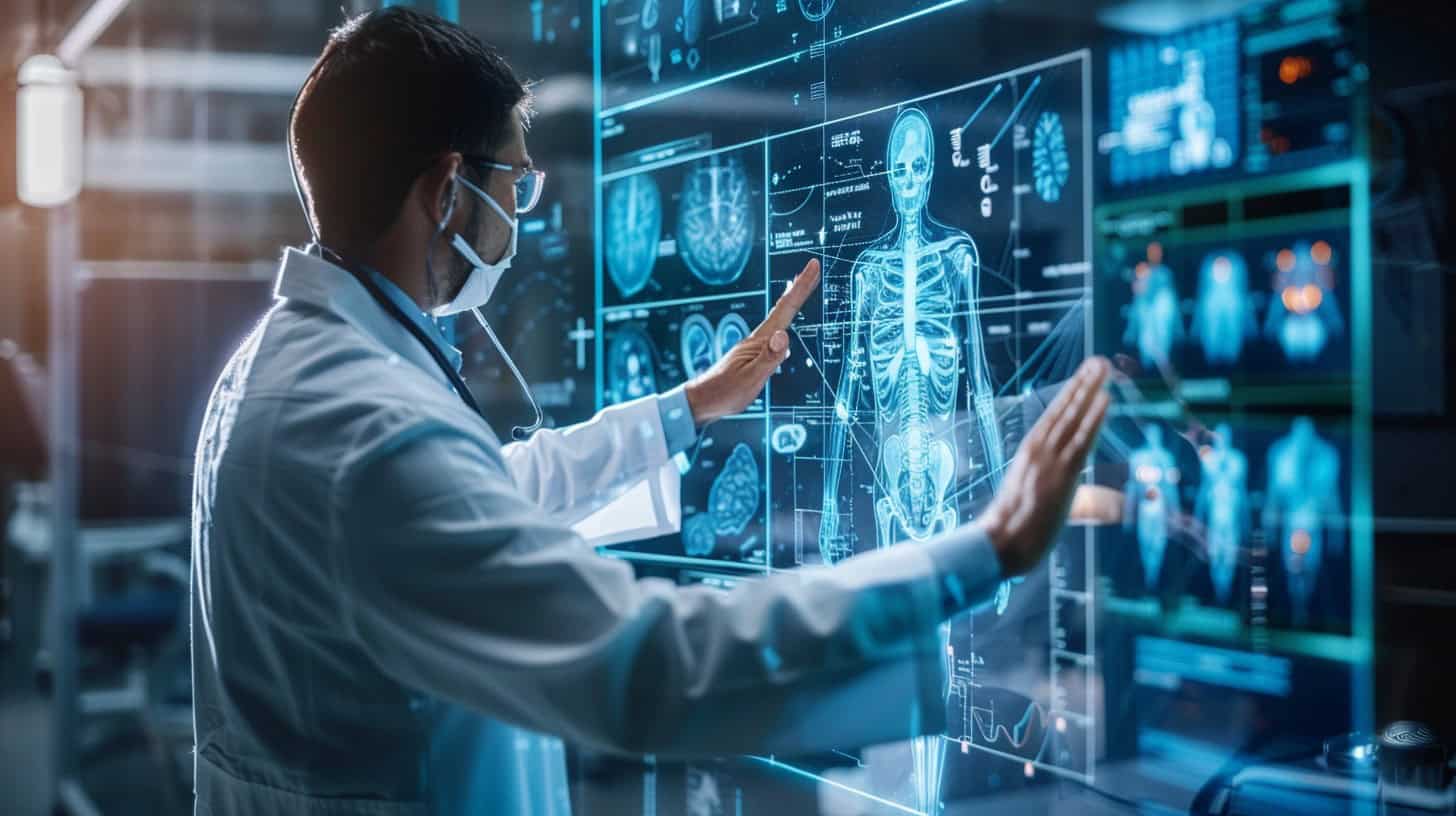Virtual medicine revolutionizes healthcare delivery. It enables patients to receive medical care remotely, without in-person visits. This digital approach offers access to specialists, regardless of location. 1 It proves especially valuable during pandemics, allowing safe consultations from home. 3
As a healthcare technology expert with 15 years of experience, I’ve witnessed virtual medicine‘s rapid growth. It reshapes patient care through telemedicine platforms, remote monitoring, and digital health records. 2 This article explores 4 key benefits of virtual medicine transforming healthcare today. Read on to discover how it’s changing the medical landscape.
Key Takeaways
Virtual medicine uses digital tech like video chats and remote monitoring to provide healthcare from afar, with 33% of patients using these services by 2020.
Key benefits include better access to specialists, improved chronic disease management through real-time tracking, and lower costs – virtual visits cost half as much as in-person ones.
Telemedicine market is expected to grow at 22.4% per year, reaching $56.4 billion by 2028, driven by COVID-19 adoption and consumer demand.
Challenges include data privacy concerns and treatment limitations, as some procedures still require in-person care.
Rural areas with fewer than 40 doctors per 100,000 people gain improved access to healthcare through virtual medicine platforms.
Table of Contents
Exploring the Definition of Virtual Medicine
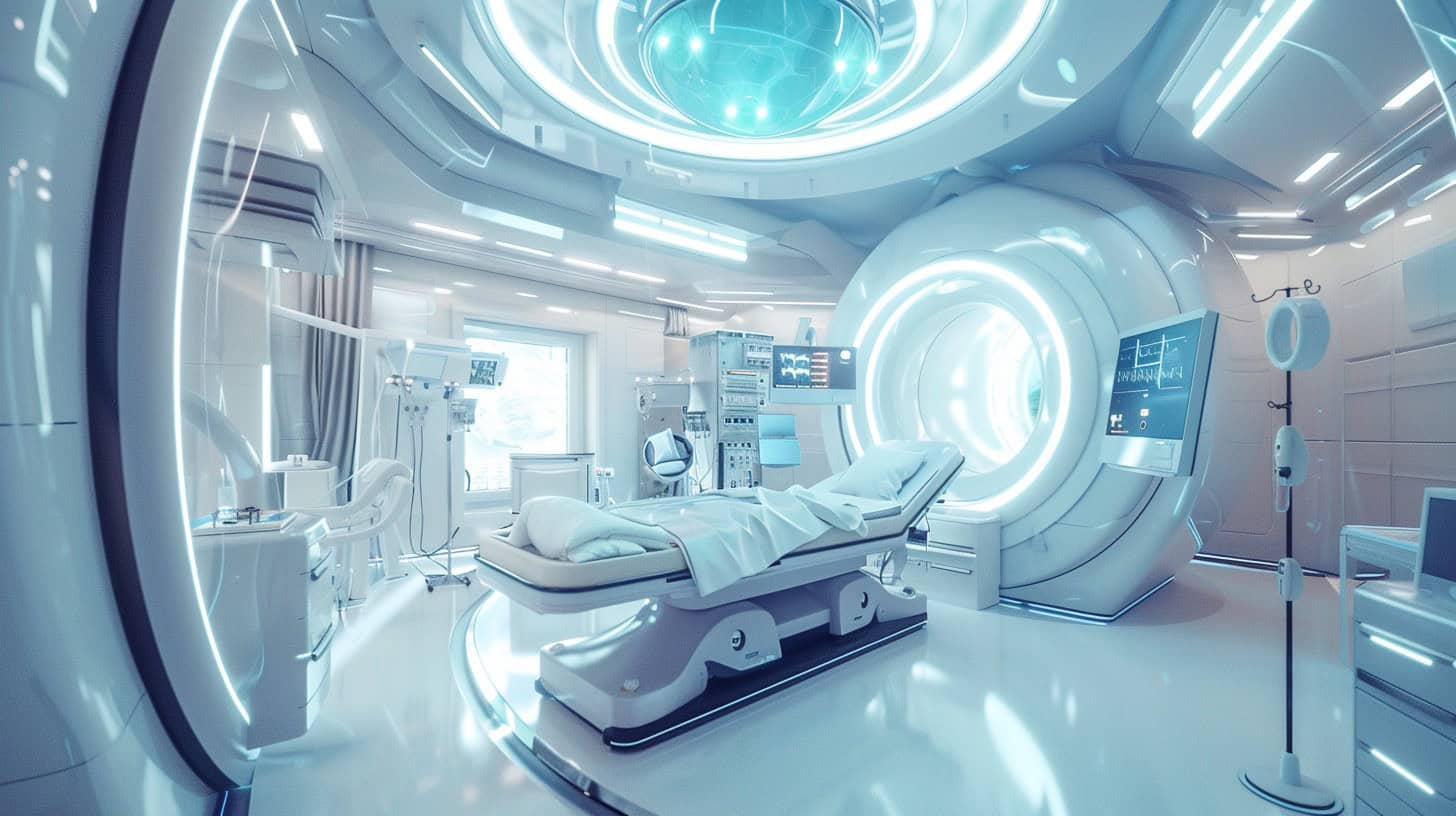
Virtual medicine harnesses digital tech for remote healthcare delivery. It encompasses telemedicine, e-health, and m-health – using video chats, secure messaging, and remote monitoring to connect patients with providers.
By 2020, 33% of patients used virtual healthcare services, generating $788 million in Q1 revenue. This digital approach integrates a Virtual Medical Assistant, leveraging AI to streamline diagnostics and enhance patient care.
Telemedicine’s roots trace back to early 20th-century communication tools, evolving alongside modern digital advancements. 1 Let’s explore how virtual medicine operates in practice. 2
Distinctions Between Virtual Medicine, Telehealth, and Telemedicine
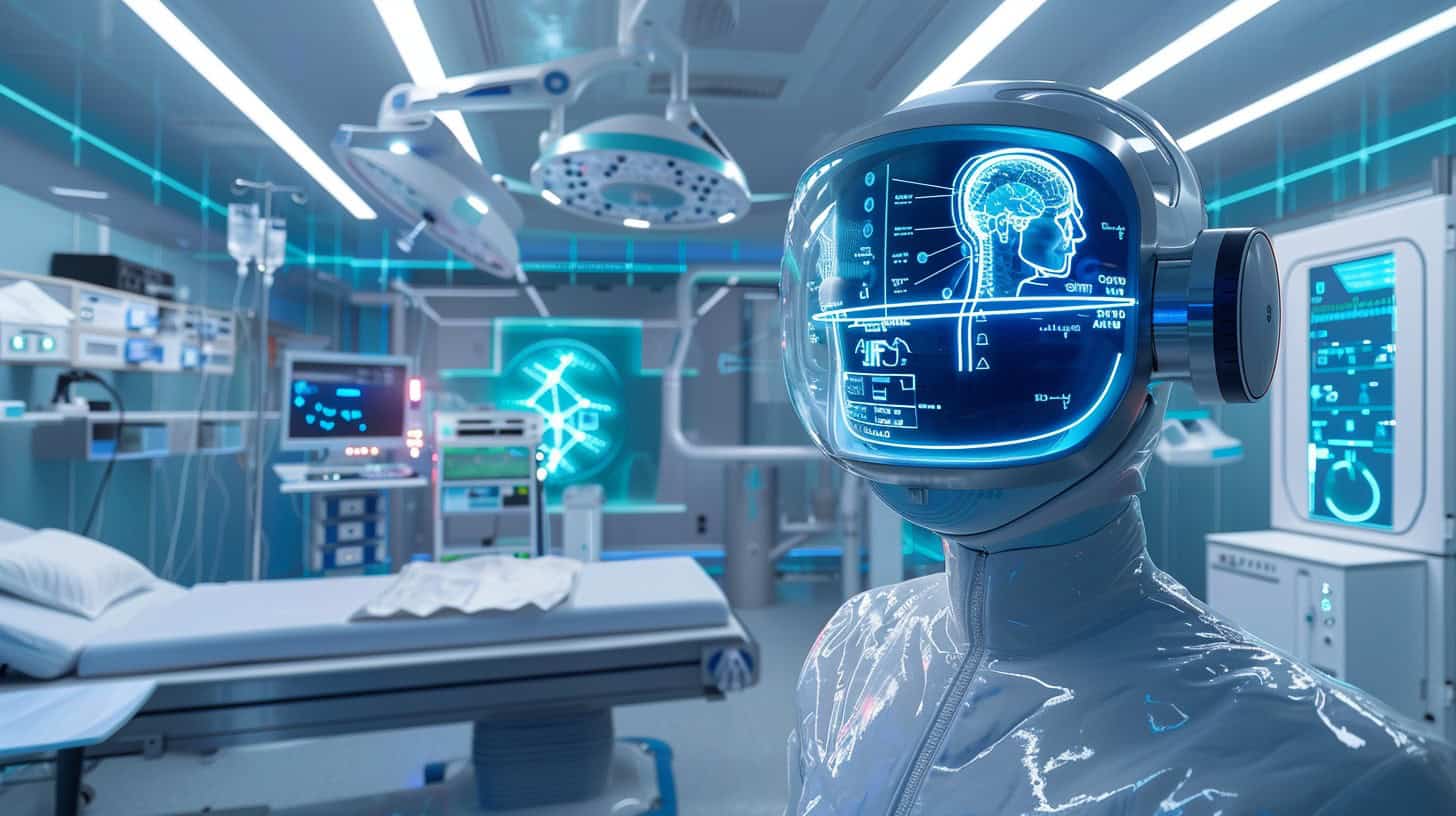
Virtual medicine, telehealth, and telemedicine are often used interchangeably, but they have distinct differences. Telehealth is the broadest term, encompassing all digital health services.
It includes clinical care, health education, and public health initiatives delivered remotely. Telemedicine, a subset of telehealth, focuses specifically on clinical services provided through technology.
Telehealth is the future of healthcare delivery, bridging gaps in access and improving patient outcomes.
Virtual medicine falls under the telemedicine umbrella, emphasizing real-time interactions between patients and healthcare providers using video conferencing, audio calls, or remote monitoring devices. 4
These digital health solutions rely on various technologies like video conferencing platforms, mobile apps, and wearable devices. They enable remote consultations, diagnosis, and treatment for a wide range of conditions, from common colds to chronic diseases.
While all three concepts aim to improve healthcare accessibility, their scope and application differ slightly. Telehealth’s broader approach includes non-clinical services, while telemedicine and virtual medicine concentrate on direct patient care through digital means. 3
Operational Mechanics of Virtual Medicine
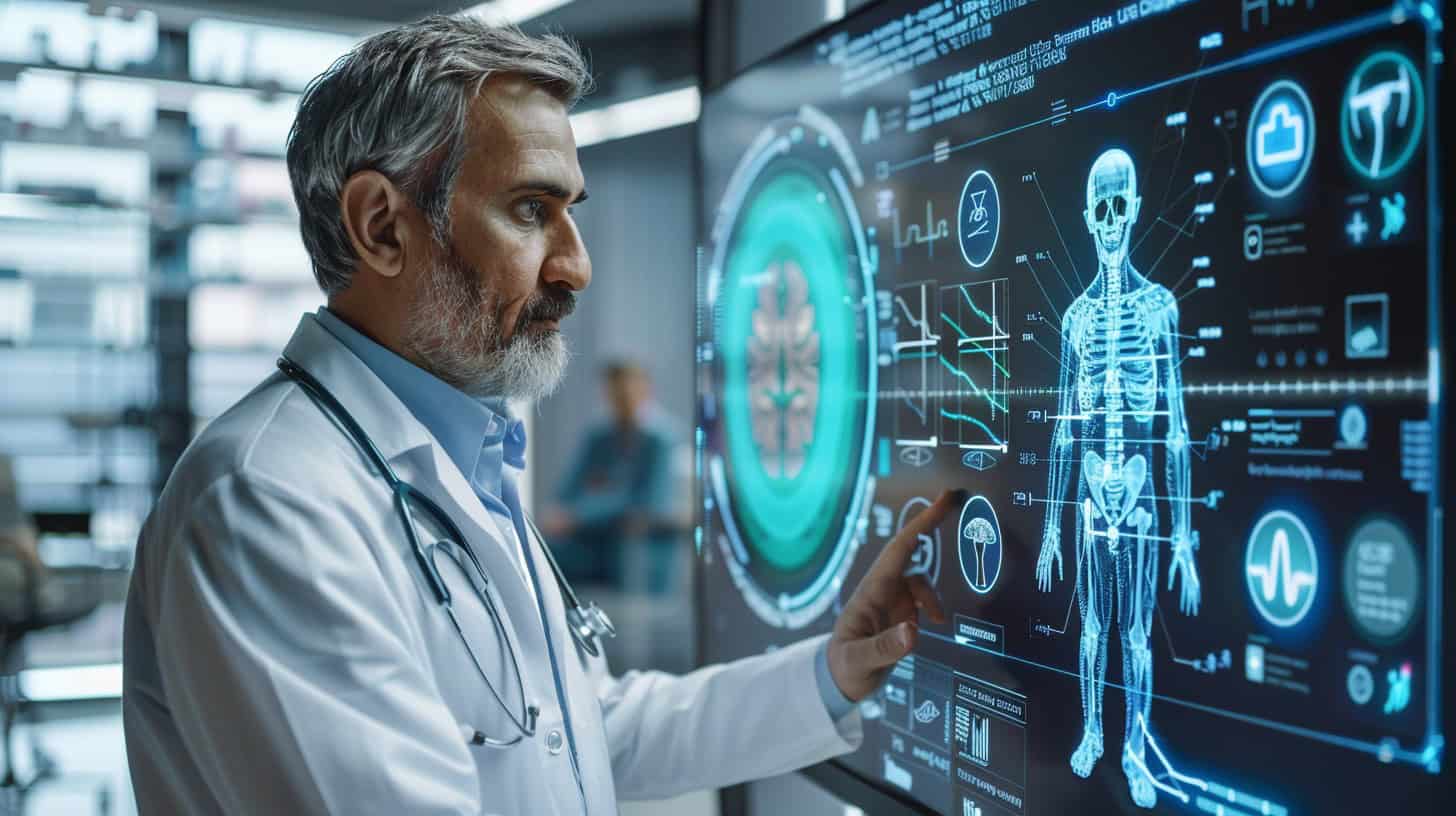
Virtual medicine runs on secure video platforms, messaging systems, and health apps… Want to know more? Keep reading!
Key Technology Platforms
Virtual medicine relies on robust, HIPAA-compliant platforms to ensure secure patient-provider interactions. 5 These systems incorporate encryption, access controls, and audit logs to safeguard protected health information.
Telemedicine visits often integrate with electronic health records and patient portals, streamlining data management. Advanced platforms support real-time video conferencing, secure messaging, and remote patient monitoring capabilities. 2
Supplementary devices enhance virtual care delivery. Blood pressure cuffs, pulse oximeters, and smart scales transmit vital data to healthcare providers. 5 Mobile health apps enable patients to track symptoms and medication adherence.
Artificial intelligence algorithms assist in preliminary diagnoses and treatment recommendations. These technologies form the backbone of virtual medicine, enabling efficient, accessible healthcare services across various specialties.
Service Varieties Offered
Virtual medicine offers a diverse range of healthcare services. These services cater to various medical needs, from routine check-ups to specialized consultations.
- Mental and behavioral health support: Online therapy sessions, counseling, and psychiatric evaluations for conditions like depression, anxiety, and attention deficit disorder.
- Urgent care clinics: Virtual visits for non-emergency issues such as colds, coughs, earaches, and minor injuries.
- Chronic disease management: Remote monitoring and follow-ups for conditions like diabetes, hypertension, and heart disease.
- Prescription management: Online consultations for medication refills and adjustments.
- Specialist consultations: Access to experts in fields like dermatology, neurology, and cardiology via video conferencing. 2
- COVID-19 screenings: Virtual assessments and guidance for potential coronavirus symptoms.
- Remote vital sign monitoring: Tracking patient health data through connected devices for early intervention. 5
- Secure information exchange: Sharing of medical records, test results, and treatment plans between healthcare providers.
- Primary care visits: Routine check-ups and general health consultations with primary care providers.
These services reshape healthcare delivery, improving access and efficiency. Next, we’ll explore the advantages of virtual medicine for both providers and patients.
Advantages of Virtual Medicine
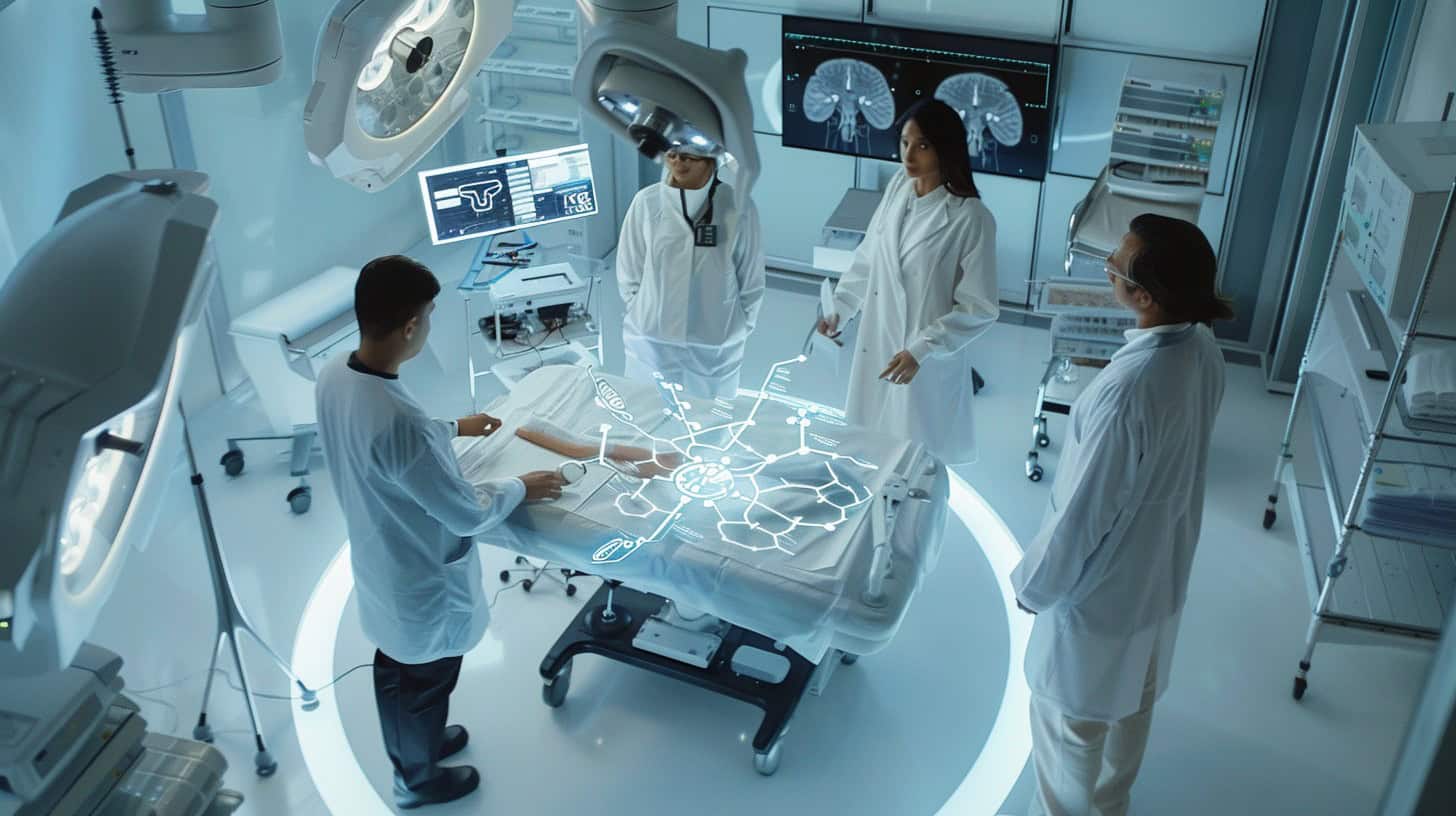
Virtual medicine offers game-changing benefits for patients and providers alike… Ready to explore how it’s reshaping healthcare?
Benefits for Healthcare Providers
Healthcare providers reap substantial rewards from virtual medicine. Telemedicine platforms boost efficiency, allowing doctors to see more patients in less time. This tech-driven approach cuts operational costs by reducing office space needs and staff requirements.
Remote patient monitoring systems enable real-time tracking of vital signs and medication adherence, improving disease management and reducing hospital readmissions. 1
Virtual consultations expand a provider’s reach, serving patients in rural areas or those with mobility issues. Advanced telehealth tools facilitate remote analysis of medical images and lab results, speeding up diagnosis and treatment decisions. 2 This digital shift also enhances work-life balance for healthcare professionals, offering flexible scheduling options and reducing burnout rates.
Enhanced Resource and Time Management
Virtual medicine streamlines resource allocation and time management for healthcare providers. Medical professionals can treat more patients in less time, reducing wait times and increasing efficiency.
Remote consultations eliminate travel, allowing doctors to see patients from multiple locations in a single day. This tech-driven approach optimizes scheduling, cuts overhead costs, and maximizes the use of medical facilities. 2
Telehealth apps revolutionize patient record management, saving hours of administrative work. Doctors access real-time data, make faster decisions, and coordinate care seamlessly across specialties.
Virtual reality enhances medical training, letting students practice procedures safely without using actual resources. This tech-forward approach boosts productivity and improves overall healthcare delivery. 6
Improved Management of Chronic Diseases
Virtual medicine revolutionizes chronic disease management. Remote monitoring tools track vital signs, medication adherence, and symptoms in real-time. Patients with hypertension, heart disease, and post-surgery conditions benefit from personalized care plans.
Healthcare providers can adjust treatments promptly, reducing complications and hospital readmissions. 7
Telemedicine improves patient outcomes and cuts costs. It boosts medication compliance and enhances quality of life for those with ongoing health issues. Patients engage more in self-management through mobile apps and video consultations.
This proactive approach leads to better control of chronic conditions and fewer emergency visits. 2
Telemedicine has transformed chronic care, empowering patients and providers alike with real-time health data and personalized interventions.
Patient Benefits
Patients reap substantial benefits from virtual medicine. Round-the-clock access to healthcare services empowers individuals to seek medical advice at their convenience. Rural and underserved areas, often lacking sufficient doctors (less than 40 per 100,000 people), gain improved healthcare accessibility through telemedicine platforms.
This technology bridges geographical gaps, connecting patients with specialized medical expertise previously out of reach. 1
Cost savings drive patient adoption of virtual care. Harvard Health reports virtual visits cost half as much as in-person consultations, easing financial burdens for many. Telemedicine also reduces unnecessary care, streamlining the healthcare process.
Patients with chronic conditions benefit from enhanced disease management through regular virtual check-ins. 2 Next, we’ll explore the hurdles and boundaries in implementing virtual medicine solutions.
Access to Specialized Medical Expertise
Virtual medicine breaks down geographical barriers, connecting patients with top specialists worldwide. A rural patient with a rare condition can now consult leading experts without travel.
Telemedicine platforms enable radiologists to analyze medical images remotely, providing quick diagnoses. 1 Surgeons offer remote consultations and telementoring, expanding access to surgical expertise.
Telepathology allows pathologists to examine tissue samples from afar, speeding up diagnostic processes.
This digital shift democratizes healthcare, giving more people access to specialized knowledge. Patients with complex conditions benefit from second opinions and collaborative care across multiple experts.
Remote monitoring systems track vital signs, allowing specialists to manage chronic diseases from a distance. 2 Virtual urgent care helps determine if in-person visits are necessary, saving time and resources for both patients and healthcare providers.
Lowering Healthcare Costs
Virtual medicine slashes healthcare costs significantly. Harvard Health reports virtual care costs half of in-person visits. 1 Patients save on travel expenses, time off work, and childcare.
Healthcare providers reduce overhead for physical facilities and staff. Telemedicine minimizes unnecessary ER visits and hospital stays, further cutting expenses. 8 The cost-effectiveness of virtual care is reshaping healthcare economics.
Telemedicine offers equal access to quality healthcare regardless of geographical location.
Data privacy concerns pose challenges in virtual medicine implementation.
Hurdles and Boundaries in Virtual Medicine
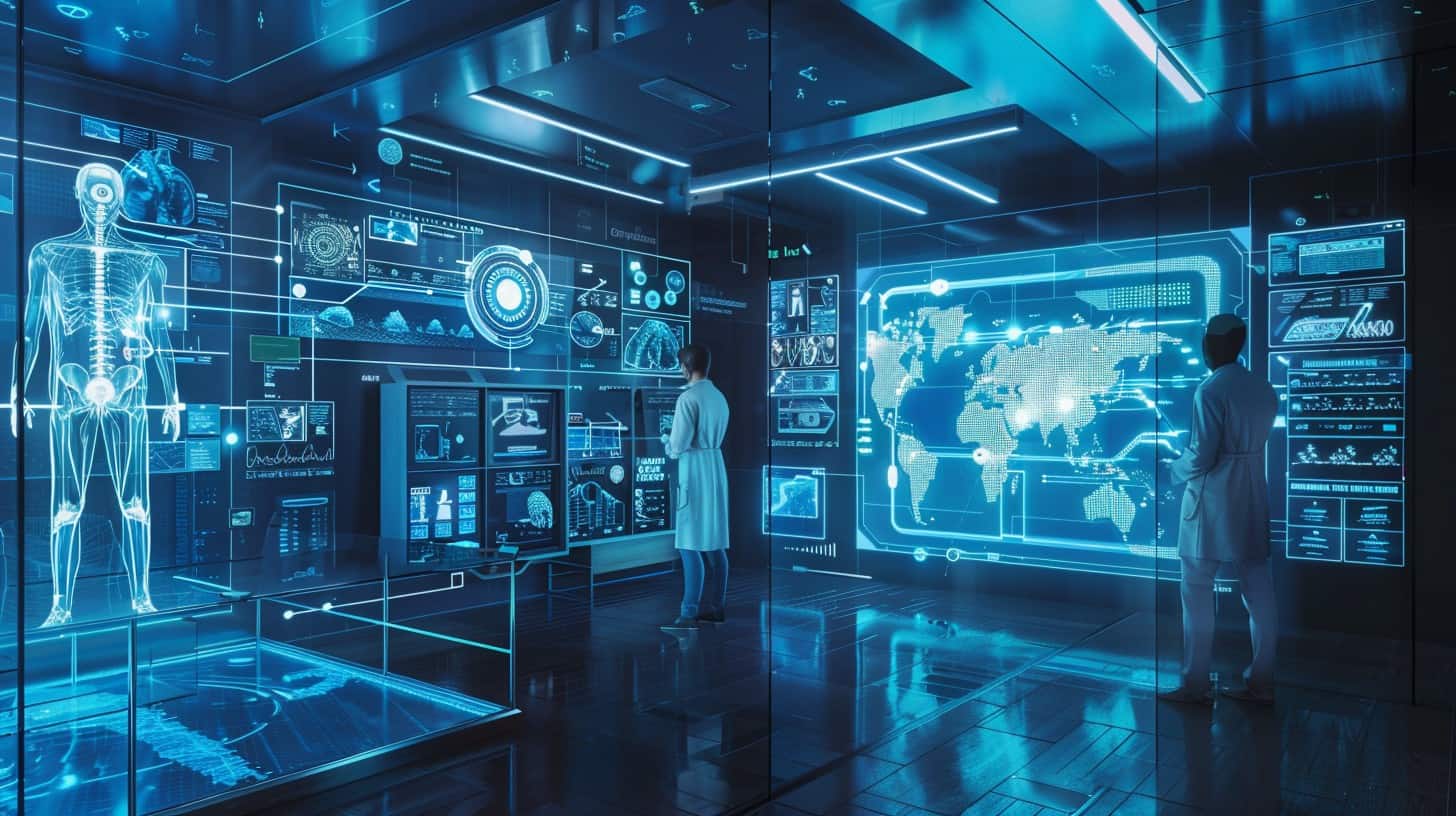
Virtual medicine faces challenges in data security and treatment scope. Concerns about privacy and limits on remote care need addressing for wider adoption.
Data Privacy Concerns
Data privacy in virtual medicine demands stringent safeguards. HIPAA compliance, secure transmission protocols, and encryption technologies form the backbone of patient data protection. 1 Medical image sharing and remote vital sign monitoring require robust security measures to prevent unauthorized access.
Telemedicine platforms must prioritize data privacy to maintain patient trust. Secure information transmission, strict adherence to privacy regulations, and continuous security updates are crucial. 9 These measures ensure the confidentiality of personal health records, medical histories, and sensitive diagnoses. Next, we’ll explore the scope limitations in treatment for virtual medicine.
Scope Limitations in Treatment
Transitioning from data privacy concerns, virtual medicine faces inherent treatment limitations. Certain medical procedures require physical presence. Surgeries, complex diagnostic tests, and hands-on therapies can’t be performed remotely. 5 Post-operative care often demands in-person follow-ups.
Virtual consultations may miss crucial physical cues. Doctors can’t use medical lasers or conduct full physical exams online. Some conditions need immediate, direct intervention. 10 Telemedicine works best for routine check-ups, prescription refills, and minor ailments.
It supplements, not replaces, traditional healthcare. Rural areas benefit from increased access to specialists, but internet connectivity issues persist.
Projecting the Progress of Virtual Medicine
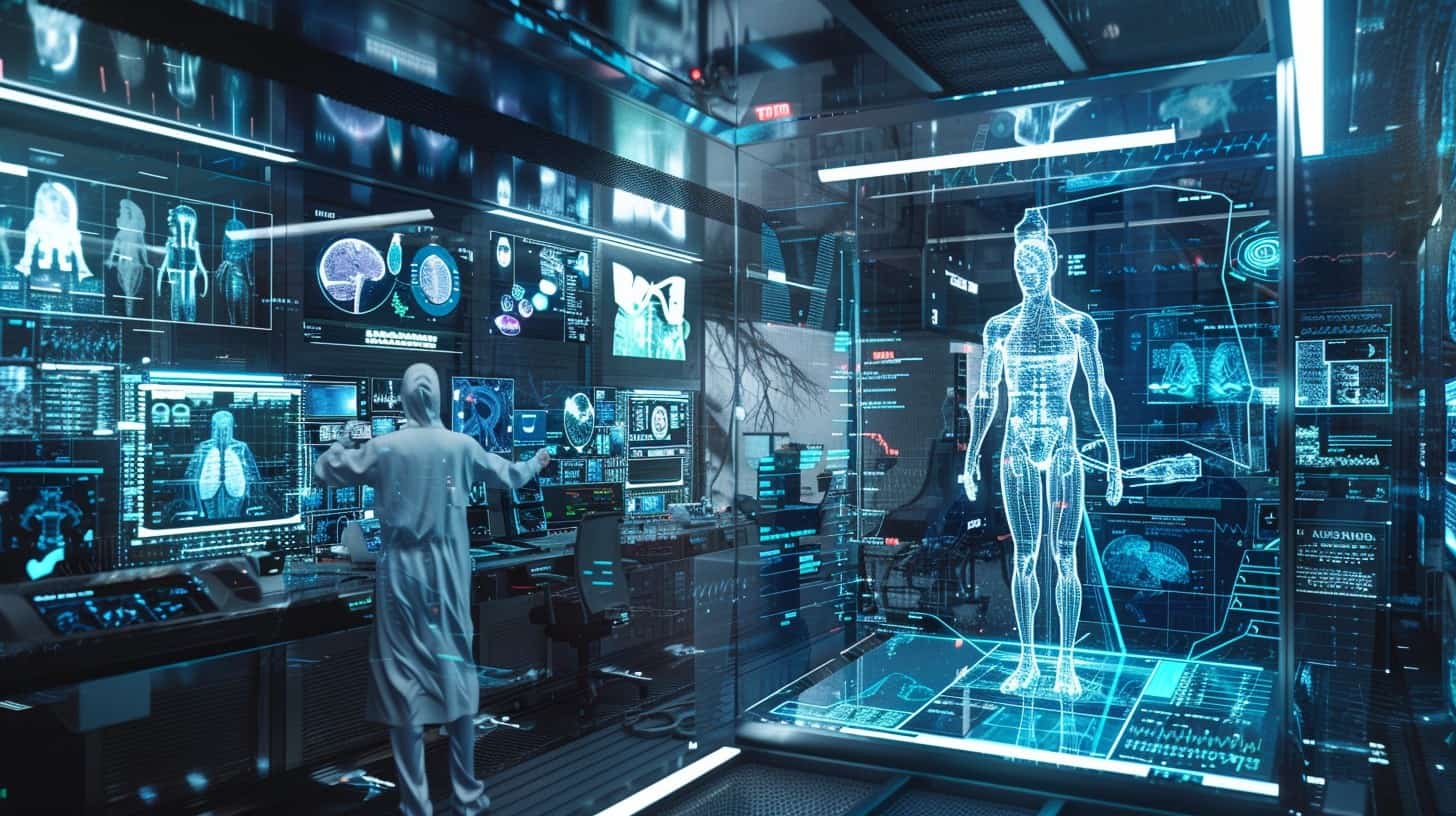
Virtual medicine’s trajectory points to exponential growth. Market projections indicate a surge from $56.4 billion in 2020 to a compound annual growth rate of 22.4% by 2028. 8 This boom stems from increased adoption during COVID-19, solidifying telemedicine’s role in future healthcare.
Investments in healthcare software development are fueling innovation, expanding service offerings beyond basic consultations. Experts predict virtual care will remain a viable post-pandemic option, driven by consumer demand and technological advancements.
Custom healthcare platforms are evolving to support more complex medical services. These include remote patient monitoring for chronic conditions, AI-assisted diagnostics, and virtual reality applications for rehabilitation.
Rural areas stand to benefit significantly, gaining access to specialists previously out of reach. As 5G networks expand, the quality and reliability of video consultations will improve dramatically.
Privacy concerns persist, but enhanced encryption methods and strict data protection laws are addressing these issues head-on. 2
People Also Ask
What is virtual medicine?
Virtual medicine uses the internet and communication tech for remote healthcare. Patients connect with doctors via video calls, email, or smartphones. It’s reshaping modern medicine.
How does virtual medicine work?
Patients use mobile devices for video conferences with health professionals. They discuss medical history, symptoms, and get prescriptions. It’s like a digital check-up.
Can virtual medicine handle all health problems?
Not all. It’s great for mental health, high blood pressure, and some infectious diseases. Complex cases still need in-person care. Consult your doctor about virtual options.
Is virtual medicine secure?
Yes, but be careful. Use strong passwords, avoid public Wi-Fi, and check privacy settings. Healthcare systems use website cookies and browser security to protect info.
What are the benefits of virtual medicine?
It improves access to care, especially in rural areas. It’s convenient, saves time, and can lower costs. It also helps with preventive care and managing chronic conditions.
Can I get prescriptions through virtual medicine?
Often, yes. Doctors can prescribe many medicines virtually. Some conditions, like attention deficit disorder, may need in-person visits. Always follow your healthcare provider’s advice.
References
^ https://www.ncbi.nlm.nih.gov/pmc/articles/PMC11009553/
^ https://www.ncbi.nlm.nih.gov/pmc/articles/PMC8590973/
^ https://www.elationhealth.com/resources/blogs/virtual-care-vs-telehealth-understanding-the-distinctions
^ https://www.ourcrowd.com/learn/telehealth-vs-telemedicine
^ https://www.ncbi.nlm.nih.gov/pmc/articles/PMC7502422/
^ https://www.xr.health/blog/the-top-8-ways-virtual-reality-in-healthcare-is-transforming-medicine/ (2023-03-17)
^ https://timedochealth.com/2024/05/07/4-ways-virtual-care-complements-traditional-care-for-chronic-conditions/
^ https://aipxperts.com/from-convenience-to-quality-how-telemedicine-and-virtual-healthcare-solutions-have-changed-the-healthcare-industry/
^ https://www.ncbi.nlm.nih.gov/pmc/articles/PMC9860467/
^ https://ojs.scholarsportal.info/toronto/index.php/juls/article/view/37034
